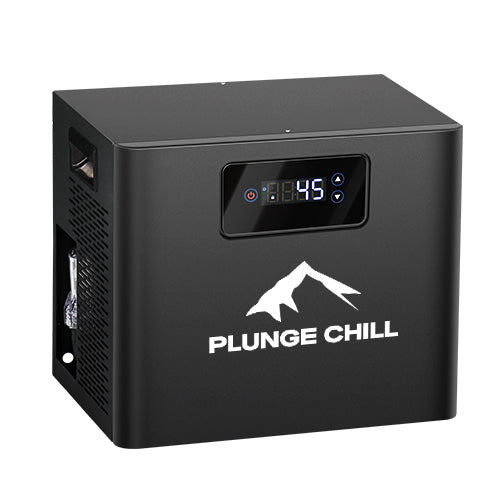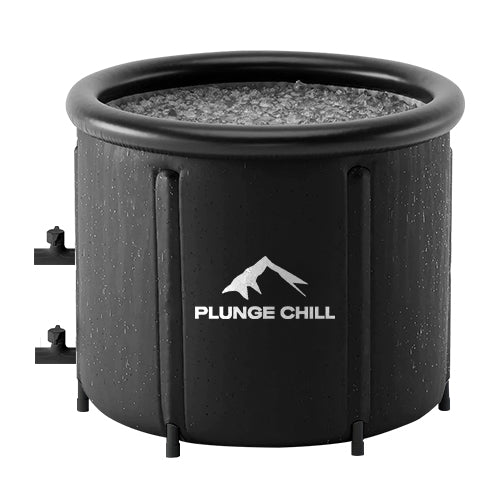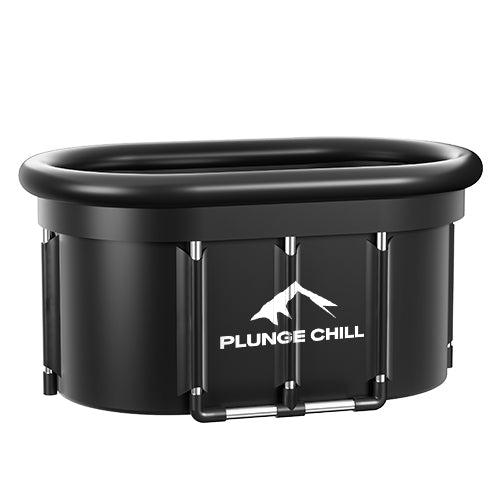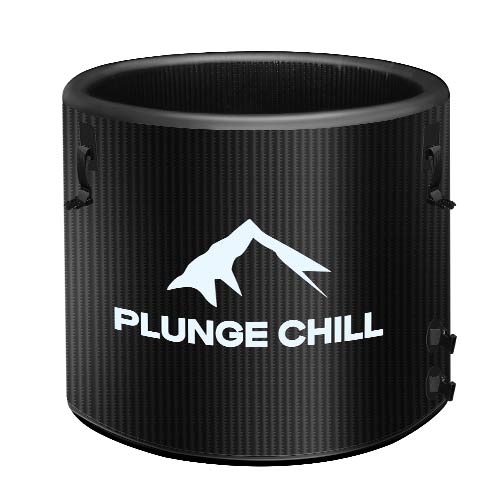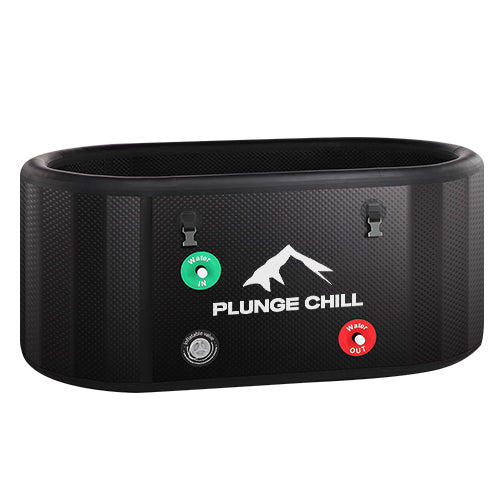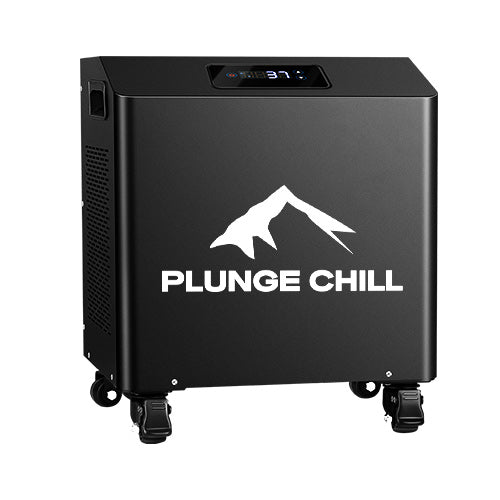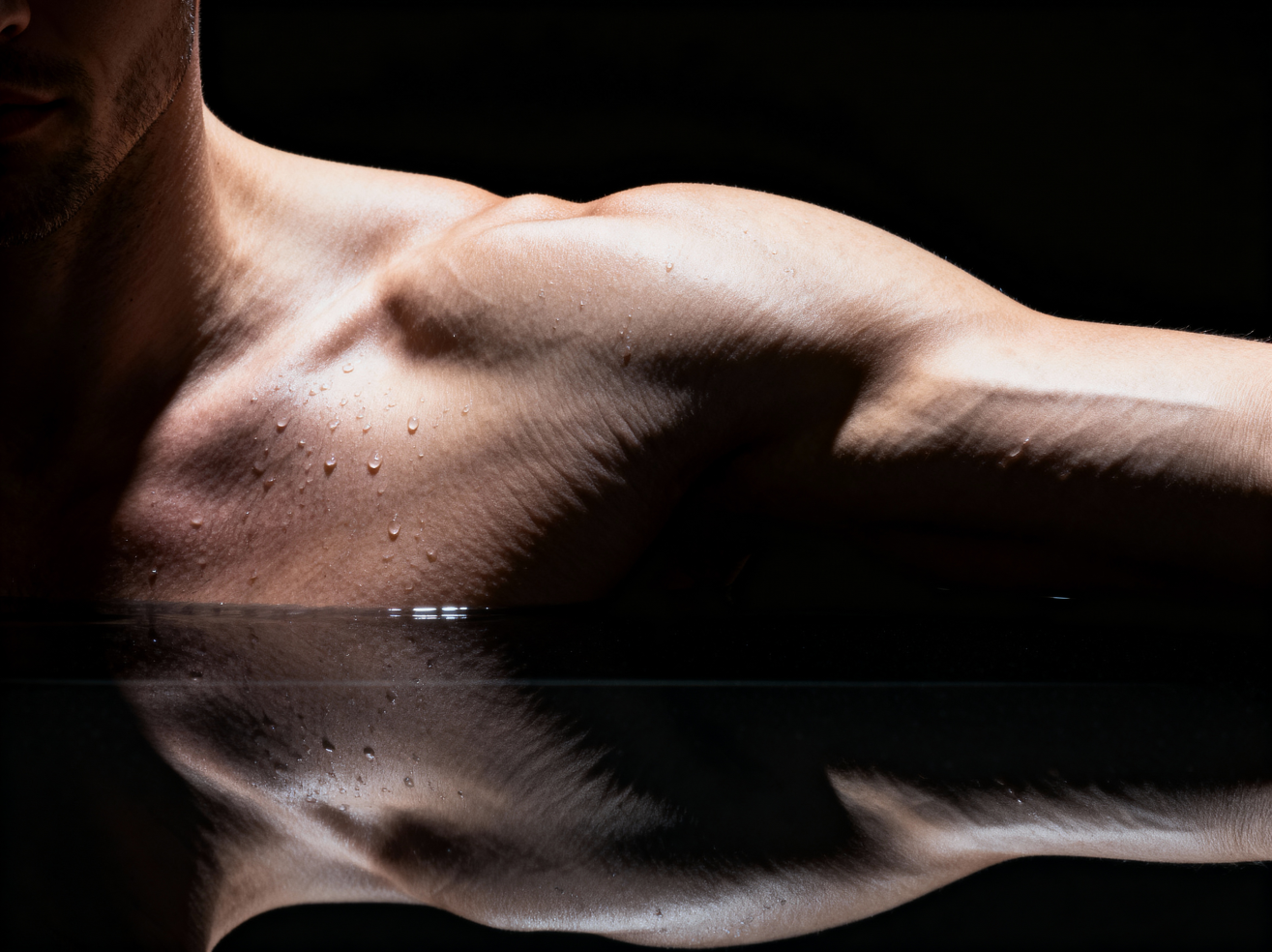Cold plunges have crossed over from locker rooms to living rooms, and weight-loss claims are often the hook. As a sports rehabilitation specialist and strength coach who also evaluates cold plunge products, I use cold immersion regularly with athletes to speed return-to-play after tournaments and to steady the nervous system after multi-session days. I also test consumer tubs for temperature accuracy, safety, and ease of upkeep. The reality I’ve seen on the sideline and in the lab is more nuanced than social media promises. This article clarifies where cold water baths help, where they don’t, and how to use them intelligently if fat loss is your goal.
Why Cold Exposure Captured the Weight-Loss Imagination
The draw is simple: energy balance governs weight change. When energy expenditure exceeds intake, weight tends to drop. Resting energy expenditure comprises the largest portion of daily burn, and cold exposure can acutely raise it through thermogenesis. There are two main thermogenic routes. Shivering thermogenesis uses rapid, involuntary muscle contractions to generate heat. Non‑shivering thermogenesis is driven by brown adipose tissue, or BAT, a metabolically active fat depot—often concentrated around the neck and shoulders—that burns fuels to produce heat when stimulated by sympathetic norepinephrine. Human studies show that acute cold exposure increases energy expenditure and activates BAT. A meta‑analysis of randomized trials reported an average increase of about 188 kilocalories per day during mild cold, alongside measurable gains in BAT activity and volume. That is real physiology, and it helps explain cold’s enduring appeal.
The step many people miss is that energy balance includes both sides of the ledger. Cold exposure often increases hunger. In practice, appetite can easily outpace the extra calories burned unless nutrition is handled deliberately. That reality drives several of the most persistent misconceptions.

The Misconception Landscape
“Ice baths melt fat fast”
A common headline claim is that cold plunges “boost metabolism by 350 percent.” There are conditions under which relative metabolic rates spike during very cold exposures; however, aggregated human trials under mild, practical protocols typically show modest increases. A meta-analysis in adults exposed to cool environments above shivering thresholds found an average increase of roughly 188 kilocalories per day during the exposure period, not an all‑day, everyday boost. Some brand content highlights a study in which liquid‑cooled suits added roughly 250 kilocalories over three hours, which is consistent with a modest hourly burn and again relies on active cooling during the exposure. These differences largely stem from what is being measured. Short‑window, in‑the‑water metabolic surges are not the same as total daily energy expenditure once you step out, eat, work, and sleep. Methodology matters: temperature, duration, whether shivering is allowed, and how energy intake is controlled all change the outcome.
“Cold alone leads to lasting weight loss”
Repeated cold bouts do not consistently reduce body weight or fat mass in humans when people eat according to appetite. A structured review of intermittent cold exposure reports consistent increases in BAT activity and cold‑induced energy expenditure, but weight and fat mass typically do not change without dietary control. One tightly controlled human experiment, summarized by a consumer health outlet, found that a 30‑minute cold‑water immersion increased energy expenditure slightly compared with warm water, yet participants consumed about 231 additional kilocalories at the next meal, erasing the small energetic gain. Neuroscience research offers a plausible mechanism: cold can engage a thalamic circuit that increases food-seeking in response to energy deficit, at least in animals. Translating that to human behavior, many people feel hungrier after a plunge. If you do not plan your post‑plunge nutrition, cold exposure can raise net energy balance and work against fat loss.
“The colder and longer, the better”
Colder water demands less time to achieve a given stress, but more is not always better. Clinical and health‑system guidance typically recommends temperatures around 50 to 59 degrees Fahrenheit for several minutes, progressing gradually, with many practitioners capping home immersions near the 10-minute mark. Hospital systems note that water much below the mid‑50s Fahrenheit increases hypothermia risk without adding unique benefits for most users. A performance science perspective suggests distributing about 11 total minutes per week across two to four sessions of brief immersions in water that feels very cold yet safe. These are pragmatic ranges that balance efficacy, safety, and adherence. While brand sources sometimes highlight the “Soeberg Principle”—ending with cold and allowing the body to naturally rewarm to prolong thermogenesis—proceeding cautiously is wise, especially when you are new to cold, have lower body fat, or are outdoors. Avoiding immediate hot rewarming may extend BAT activity, but shivering is a cue to scale exposure or exit.
“Do it after every lift to burn more fat and recover faster”
Cold immersion can reduce soreness and help restore next‑day performance after grinding efforts, which is particularly useful across congested schedules or tournaments. The tradeoff is that cold water soon after resistance training can blunt the cellular signals that drive hypertrophy and strength gains. Sports medicine groups and physiology studies converge on this point: if you are prioritizing muscle growth or strength, delay cold immersion by several hours after lifting, or schedule it on non‑hypertrophy days. If the priority is readiness and pain control in the short term, cold remains a valid tool; just place it thoughtfully relative to training stimuli.
“Anyone can plunge, anywhere”
Cold shock causes an involuntary gasp and sharp rises in breathing, heart rate, and blood pressure. Health systems and academic centers consistently advise screening for cardiovascular disease, arrhythmias, severe asthma, Raynaud’s phenomenon, and pregnancy before starting. Lakes and rivers add hazards such as currents, ice, and sudden weather changes, so beginners are safer with home tubs, controlled facilities, and supervision. Cold showers are a less intense entry point that many tolerate well.

What the Science Actually Shows
Acute cold exposure reliably activates BAT and increases energy expenditure. Mechanistic work shows that under cold stress, the body re‑routes substrates across organs to fuel BAT. In cold, brown fat uses glucose and lipids to generate heat, which helps explain observed improvements in glucose handling and insulin sensitivity in some human studies. Observational signals and short‑term trials suggest potential cardiometabolic benefits, but effect sizes are small to moderate and do not automatically translate into fat mass loss.
There are two important nuances that complicate the picture and contribute to confusion. First, the metabolic contribution of existing brown fat alone may be limited in adults. Estimates from imaging and modeling in humans indicate that BAT’s direct heat output can be small at rest unless white fat undergoes a broader “beiging” shift to a more oxidative, thermogenic phenotype. Second, brown fat is dynamic and heterogeneous. In vivo imaging shows lipid content and activity in BAT change over time within and across depots during and after cold, making single timepoint snapshots easy to misinterpret. These dynamics depend on temperature intensity, duration, acclimation history, body composition, age, and even regional microenvironment within the fat depot.
Another nuance appears in metabolic studies of people with overweight and type 2 diabetes. Intermittent cold exposure increased energy expenditure during cold bouts but lowered basal metabolic rate at thermoneutrality in some cohorts. This suggests that context, temperature, and adaptation state shape the net metabolic effect once you consider the whole day.
Animal research adds depth but also limits. Work in Molecular Cell identified a transcription factor that promotes brown fat formation and cold‑induced activation in mice, and studies in Cell showed immune signals can drive the conversion of white fat to beige fat. These pathways are promising but remain translational; they are not prescriptions for human cold practice. At the same time, a large health network review notes that broader outcomes such as mood, sleep, and soreness can improve with cold exposure, while the evidence for large or lasting changes in body composition is mixed and method‑dependent.

Claims vs Evidence at a Glance
|
Common claim |
What rigorous evidence indicates |
Likely reason for mismatch |
Representative sources |
|
Cold plunges boost metabolism by 350 percent |
Mild cold typically adds about 188 kilocalories per day during exposure; cold‑suit protocols report ~250 kilocalories over three hours |
Short‑window metabolic spikes measured during very cold exposure are not equal to whole‑day energy expenditure |
PubMed Central meta‑analysis; brand summaries |
|
Brown fat alone melts fat at rest |
Adult BAT thermogenesis is limited unless white fat “beiges” toward a more oxidative phenotype |
Small BAT mass in adults; depot heterogeneity; protocol differences |
PubMed Central review; Vanderbilt imaging work |
|
Cold alone produces lasting weight loss |
Weight and fat mass often do not change without dietary control, despite higher EE during cold |
Compensatory appetite and intake frequently offset EE gains |
Intermittent cold exposure review; human feeding study summary |
The table illustrates why a single viral statistic rarely tells the whole story. Definitions, temperature, exposure duration, participant characteristics, and whether energy intake is controlled drive different outcomes.
Practical Guidance for Athletes, Lifters, and Busy Professionals
In my teams, cold immersion lives in two very different places. During tournament weekends or two‑a‑days, post‑event cold helps reduce soreness and preserves next‑day output. When athletes are in a hypertrophy block, we keep cold away from lifting sessions by at least six to eight hours, or we move it to off days, which preserves adaptation while still capturing mental and sleep benefits later in the week. If fat loss is a priority, we pair cold with nutrition discipline rather than hoping the water will do the work.
Start conservatively and progress. Many beginners tolerate brief cold showers first, then short immersions in a controlled tub around 50 to 59 degrees Fahrenheit for a couple of minutes, adding small increments as tolerance grows. A practical target is accumulating roughly 10 to 15 minutes per week across multiple sessions. Several high‑quality hospital sources recommend avoiding very low temperatures at home, keeping the water in the low‑to‑mid 50s Fahrenheit for most users. When cold is used for metabolic goals, ending sessions with cold and allowing the body to rewarm naturally can extend thermogenic effects. If you shiver intensely or feel nauseated, exit and rewarm gradually.
Manage the appetite surge. Most athletes feel hungrier after cold. Plan the next meal deliberately. A high‑protein, high‑fiber meal immediately after the plunge often curbs drive to overeat later. In applied settings, we also front‑load fluids and include warm tea or broth during rewarming to aid comfort without opening caloric floodgates. These steps are practical coaching adjustments rather than controlled trial outcomes, and individual responses vary.
Place cold relative to training goals. If strength and size are your focus, separate cold from lifting by several hours. If tournament performance and soreness control matter more, a short immersion soon after events can help. Endurance training seems less sensitive to blunting by cold, but cold shock is still a risk, so start with lighter sessions and supervised exposures.

Product Care and Buying Tips from the Field
Many consumer tubs look alike in photos yet perform very differently during daily use. Temperature accuracy and recovery speed matter far more than marketing adjectives. Units with chillers that can reliably hold water near 50 to 59 degrees Fahrenheit during repeated entries without large rebounds are less frustrating to live with. Insulation, a snug lid, and a covered reservoir prevent heat creep and debris. Every home needs non‑slip surfaces around the tub, stable steps, and handles for safe egress. A well‑placed drain and hose attachment make water changes realistic. If you plan to keep a tub on a deck or in a garage, evaluate ambient temperature range, power draw, noise, and whether the compressor tolerates overnight lows.
Water care is the least glamorous yet most important ownership skill. Tubs that include filtration and clear sanitation guidance reduce guesswork. In my testing pool, systems with an inline filter plus supplemental ozone or UV kept water clearer between changes, especially with multiple weekly users. That said, sanitation protocols vary by manufacturer, and you should follow the unit’s instructions rather than relying on generic advice. Confidence: Low. One step to verify would be to request the written water‑care protocol from the manufacturer and confirm recommended sanitizer types and change intervals before purchase.
Warranty and support deserve equal weight. Cold creates unique stresses on pumps, gaskets, and electronics. Brands that publish spare‑part availability and offer reachable support are easier to recommend than those that only emphasize aesthetics. Cold‑focused companies often bundle absorbent mats and temperature‑control accessories; those small additions reduce slip risk and keep the install footprint tidy.
A brief note on brand claims. You will see promises of dramatic metabolism boosts and “detox” language. Treat those as marketing. Look for companies that describe realistic temperature ranges, session guidance consistent with health‑system advice, and safety information up front.

Equipment Features That Matter
|
Feature |
Why it matters in practice |
|
Accurate, stable temperature control |
Holds 50–59 ℉ without big rebounds during entry, making dosing consistent |
|
Insulation and well‑fitted lid |
Reduces energy use and keeps debris out, extending water life |
|
Non‑slip surfaces and stable steps |
Prevents falls during cold‑impaired motor control and rapid exits |
|
Filtration and clear sanitation protocol |
Keeps water hygienic between changes; lowers biofilm risk |
|
Accessible drain and hose attachment |
Makes routine maintenance feasible in real homes |
|
Support and parts availability |
Shortens downtime when pumps, seals, or sensors need service |
These features are the difference between a tub you use twice and a tool you integrate into your week.
Pros and Cons in the Weight‑Management Context
The strongest case for cold in body‑composition programs is as an adjunct. Human trials show that acute cold raises energy expenditure and activates BAT and, in some settings, improves insulin sensitivity and glucose handling. Mental effects—enhanced alertness and mood—can make training and nutrition adherence easier. Recovery benefits are meaningful when you need to perform again quickly. The counterweights are appetite increases that can overshoot energy burn, inconsistent changes in body mass without dietary control, and potential blunting of resistance‑training adaptations when cold is mistimed. Risk management is essential, particularly for people with cardiovascular or respiratory conditions or with low body fat who cool quickly.
Two overlooked insights should guide expectations. First, brown fat is not a static furnace; imaging shows depot‑level dynamics and individual variability, which explain why some people report strong cold responses while others feel little change under the same protocol. Second, in men with overweight or type 2 diabetes, cold raised energy expenditure during exposure but lowered basal metabolic rate at neutral temperatures, implying protocol design and participant characteristics can invert net effects if you only look at twenty‑four‑hour totals. These help explain mixed headlines and reinforce the need to personalize.
A third point speaks to hunger. Basic neuroscience on cold‑induced appetite shows a centrally coordinated signal to seek food in energy deficit states, at least in animals, and human behavior in laboratory settings mirrors this drive. If your goal is fat loss, plan your next two meals after a plunge before you get in the water.

Practical Protocols and Timing
For most healthy adults, a sensible progression begins with ending showers cold for thirty to sixty seconds, adding time as tolerance improves. Once you move to a tub, aim for water in the 50 to 59 degrees Fahrenheit range for short immersions and build toward accumulating ten to fifteen minutes per week across two to four sessions. When metabolic support is a goal, finish sessions cold and allow the body to rewarm naturally in a warm environment rather than jumping immediately into hot water. If you shiver strongly, shorten exposure or raise water temperature. Athletes chasing hypertrophy should avoid cold in the immediate post‑lift window and consider scheduling immersions on rest days or many hours after training.
Institutional guidance emphasizes safety. Consult a clinician if you have cardiovascular disease, arrhythmias, severe asthma, Raynaud’s phenomenon, or are pregnant. Avoid open water with currents or ice unless you are trained and accompanied. Keep a towel, warm clothing, and a warm beverage within reach. Early sessions are best done with a partner nearby.

Takeaway
Cold water baths can play a thoughtful supporting role in weight management but will not substitute for diet quality, caloric control, and training. Acute cold increases energy expenditure and activates brown fat; the magnitude is real but modest under practical conditions. Appetite commonly rises after plunges and can overwhelm any energy burn unless you plan meals. Place cold away from hypertrophy sessions, treat it as a recovery aid during congested periods, and select equipment for safety, temperature stability, and maintainability rather than promises of extreme results. If you choose to plunge, do it on purpose—not out of hope that cold alone will melt fat.
Short FAQ
Can cold water baths directly burn a lot of fat?
Cold increases energy expenditure during exposure and activates brown fat, but the added burn is typically modest under home protocols. Without dietary control, post‑plunge hunger can erase the gain. Systematic human studies often show improved metabolic markers rather than reliable fat mass loss.
What temperature and duration are sensible for most people?
Many clinical sources converge on water near 50 to 59 degrees Fahrenheit for several minutes, progressing gradually. A practical weekly goal is about ten to fifteen total minutes split across multiple brief sessions. If you feel intense shivering, reduce exposure or increase temperature.
Should I cold plunge after lifting?
Not if hypertrophy and strength are your priorities. Cold immersion soon after resistance training can blunt muscle‑building signals. Delay by several hours or move cold to non‑lifting days. If soreness reduction and next‑day readiness matter most, a short post‑event immersion can help.
Why am I hungrier after a plunge?
Cold increases energy expenditure, and the brain responds by driving food‑seeking. Controlled experiments show higher post‑plunge intake can exceed the added burn. Plan a high‑protein, high‑fiber meal and fluids after cold to prevent compensatory overeating.
Do cold showers do the same thing as full immersion?
Showers are a gentler entry point and can confer some of the alertness and recovery benefits. Full chest‑deep immersion in cold water is better studied for metabolic and recovery effects. Choose based on goals, tolerance, and safety.
What should I look for in a home cold plunge?
Prioritize accurate temperature control, good insulation, non‑slip safety, filtration with clear sanitation instructions, an accessible drain, and responsive support. Extras like absorbent mats and well‑placed steps reduce slip risk. Sanitation specifics vary by brand; confirm the written protocol before purchase. Confidence: Low. Verify by requesting the water‑care guide from the manufacturer and reviewing recommended sanitizer type and filter change intervals.
Brief Source Notes
This synthesis draws on randomized and systematic human studies cataloged in PubMed Central on acute cold exposure, intermittent cold exposure reviews, health‑system guidance from major medical centers, neuroscience insights on cold‑induced appetite from Scripps Research, and translational mechanisms related to brown and beige fat described in Science Advances, Cell, and Molecular Cell. Popular and brand sources were included where they cite protocols and practical tips; where their claims diverge from trials, likely causes include differences in definitions, measurement windows, sample characteristics, and whether energy intake was controlled. Where inferences were made beyond the notes—particularly water sanitation steps—they are explicitly flagged with confidence and a suggested verification step.
References
- https://hms.harvard.edu/news/new-obesity-tool
- https://pmc.ncbi.nlm.nih.gov/articles/PMC10778965/
- https://www.scripps.edu/news-and-events/press-room/2023/20230816-ye-nature.html
- https://news.berkeley.edu/2015/01/08/energy-burning-brown-fat-protein/
- https://www.ucsf.edu/news/2014/06/114951/fat-burning-triggered-cold-weather-may-suggest-new-weight-loss-strategy
- https://ir.vanderbilt.edu/bitstream/1803/9977/1/Cold%20exposure%20induces%20dynamic%2C%20heterogeneous%20alterations%20in%20human%20brown%20adipose%20tissue%20lipid%20content.pdf
- https://mydoctor.kaiserpermanente.org/mas/news/health-benefits-of-cold-water-plunging-2781939
- https://mcpress.mayoclinic.org/healthy-aging/the-science-behind-ice-baths-for-recovery/
- https://www.mayoclinichealthsystem.org/hometown-health/speaking-of-health/cold-plunge-after-workouts
- https://www.science.org/doi/10.1126/sciadv.adt7369
Disclaimer
The information provided in this article is for informational and educational purposes only and is not intended as medical advice or as a substitute for professional medical advice, diagnosis, or treatment. The author is a sports rehabilitation specialist and strength coach, not a medical doctor. The views and opinions expressed in this article are those of the author and based on their professional experience and interpretation of the cited research.
The content of this article discusses physiological processes related to metabolism, brown adipose tissue, glucose regulation, and training adaptations. Always seek the advice of your physician or other qualified health provider with any questions you may have regarding a medical condition (such as diabetes, cardiovascular disease, or metabolic disorders) or before starting any new health or wellness practice, including cold water immersion. Do not disregard professional medical advice or delay in seeking it because of something you have read in this article. Reliance on any information provided in this article is solely at your own risk.
